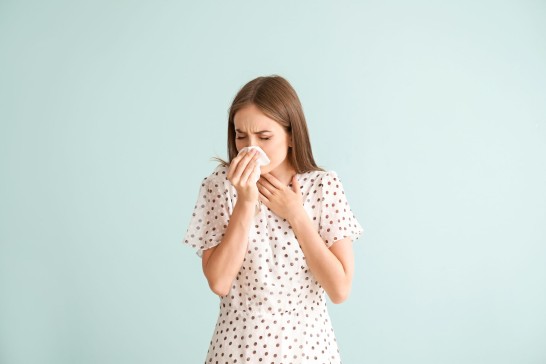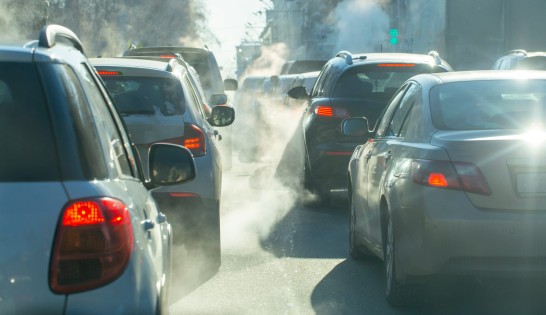Eosinophilic Esophagitis (EoE)
Eosinophilic esophagitis (EoE) is a recognized diagnosis that produces symptoms related to dysfunction of the esophagus. In EoE, large amounts of white blood cells, specifically eosinophils, collect in the inner lining of the esophagus resulting in inflammation. Typically, the esophagus is free from eosinophils and resulting inflammation, and so in EoE, a patient will begin to notice a difference in the way they can eat and swallow food. This condition can be difficult to diagnose as other conditions can present with eosinophils in the esophagus, and historically EoE has not been a common or well-known disease. Awareness has significantly improved however in the last decade, and patients are being recognized and diagnosed much earlier. This week, the FDA has approved the first ever treatment for EoE.
Symptoms of EoE
Many EoE patients also have symptoms of one or more allergic disorders like asthma, allergic rhinitis, atopic dermatitis (eczema) and food allergy. It is important for EoE patients to be properly assessed and tested for potential allergens as well as properly diagnosed for their atopic conditions. Similar to proper diagnosis, it is crucial that any and all allergic aspects of EoE can be properly treated in conjunction with management of the EoE. Patients benefit from a team of providers working together such as a primary care provider, allergy specialist, and gastroenterology specialist.
Early diagnosis of this chronic condition is important so patients can be educated and properly managed, sparing them from discomfort, malnutrition, and even life-threatening situations. An emergent situation can arise if inflammation becomes too great and causes narrowing in the esophagus, trapping swallowed food. In younger children, EoE typically presents with poor feeding, failure to grow properly, vomiting, reflux symptoms, and abdominal pain, whereas in adolescents and adults EoE most often presents with dysphagia (trouble or painful swallowing) and emergent esophageal food impactions.
Allergy Correlation
Airborne allergies can play a role, however adverse immune responses to food are the main cause of EoE in many patients. It can be more difficult to properly diagnose food allergies in EoE patients because many do not present with the typical symptoms associated with IgE mediated food allergy. Instead of immediate itching, flushing, hives and vomiting after ingestion of the offending food, the reactions can be delayed over hours or days. Milk, egg, soy and wheat are recognized as the most common triggers for EoE, however, conventional allergy tests often fail to detect sensitivity to the foods causing EoE. This is because most food allergy reactions in EoE are delayed and caused primarily by immune mechanisms other than classical IgE-mediated food allergy.
Diagnosis
Other than proper identification and diagnosis of atopic conditions, EoE must also be properly diagnosed itself as a disease. If EoE is suspected, a specialist performs an upper endoscopy, where a small tube with embedded camera is passed down the esophagus. The tube not only has a camera and light for inspection, but a small device to take samples, or biopsies of the esophagus. The biopsies of the esophagus are examined under a microscope for eosinophils and inflammation and are necessary to diagnose EoE. A provider looks for appropriate symptoms that were described above, visual inspection of the esophagus, and examination of tissue biopsies to make the final diagnosis of EoE.
Managing EoE
There are many viable options to managing EoE effectively. Food sensitivities or allergies can be managed by removing those offending foods from a person’s diet, but only under the direct guidance and supervision of a provider. A provider can advise eliminating a specific food, or a food group based on individual history, examination, and diagnosis. This elimination approach can be helpful to some, but it is important to only remove what is advised, and a medical provider will closely monitor a person and regularly discuss nutrition and intake. Many times, a dietician is added to the medical care team to make sure a person is still receiving all the necessary nutrients. A provider’s goal is to carefully add back any foods that can in fact be tolerated and are proven not to incite eosinophils in the esophagus.
Aside from adjustments to a person’s diet, there are some medications providers use to help provide symptom relief and management of the EoE. It is important to note that aside from the first medication being approved by the U.S. Food and Drug Administration (FDA) to treat EoE, typical options for treatment include proton pump inhibitors and steroids. Proton pump inhibitors (PPIs) reduce acid production in the stomach and have also been found to be able to reduce esophageal inflammation in some patients with EoE. PPIs are very commonly used as a frontline therapeutic for EoE patients. If PPIs do not work for a patient, another option may be swallowed topical corticosteroids. Swallowing small prescribed doses of corticosteroids so they come in direct contact with and treat the inner lining of the esophagus is the most common treatment.
Amanda Hofmann, MPAS, PA-C, is a graduate of Duquesne University, in Pittsburgh, Pennsylvania. After spending eight years in clinical practice, she joined United Allergy Services as the vice president of clinical. Amanda is also the past president of the Association of PAs in Allergy, Asthma, and Immunology.
United Allergy Services is also on Facebook, LinkedIn, or Twitter. See other interesting and related articles on the UAS Blog.
Allergies, Asthma, and Air Quality
As we move into the summer months, it is important to understand the connection between allergies, asthma, and air quality. While air pollution does not directly cause allergy or asthma, it can increase the risk of developing atopic disease. Air pollution can also trigger allergy or asthma symptoms or an asthma attack for persons with existing conditions. Air pollution usually increases during summer months. This pollution leads to an increase in related symptoms, urgent office visits, and emergency room visits.
Air Quality Components
Allergy and asthma symptoms can be triggered by two key air pollutants, ozone (found in smog) and particle pollution (found in haze, smoke, and dust).
- Ozone, a gas, is one of the most common air pollutants, contributes to smog, and is more common in cities where there are a lot of cars. In the summer months ozone can increase when intense sunlight and heat convert a mixture of tailpipe and power plant emissions with other chemicals resulting in unhealthy air. Allergy and asthma symptoms may trigger more easily because ozone is irritating to the lungs and can reduce lung function.
- Particle pollution is present and stable throughout the year but is typically worse near busy roads, during rush hour and around factories. It is also high when there is smoke in the air from wood stoves, fireplaces, or burning vegetation. These small particles can irritate the nose, throat, and especially the lungs, and also reduce lung function and cause asthma exacerbations.
Air Quality Reports
The United States Environmental Protection Agency (EPA) reports air pollution levels using the Air Quality Index (AQI). AQI reports the level of ozone and other air pollutants. When the AQI is 101 or higher, it is dangerous for people with allergies and especially asthma. Sometimes asthmatics can experience increased symptoms even when ozone levels are moderate (AQI 51-100). Many local news stations and weather forecasters report local air quality to advise the public about moderate or high pollution days.
Another resource, The American Lung Association has just released their annual State of the Air report. One interesting finding in the report is, “The addition of 2020 data to the 2022 “State of the Air” report gives a first look at air quality trends during the COVID-19 pandemic. Regardless of the shutdowns in early 2020, there was no obvious improvement.”
Combatting Air Quality Conditions
When air quality may be dangerous to people with allergies or especially asthma, they are deemed as “Action Days”. During Action Days, people with asthma should limit their time outdoors, especially in the afternoon or rush hour periods, stay in a well-ventilated, preferably air-conditioned, building, and most of all, do not intensely exercise outdoors. Also try to keep windows closed in your home and car, and instead utilize the air conditioning on the recycled setting.
There is also a risk that you could have poor indoor air quality within your home. Irritants can exacerbate allergy and asthma symptoms. These and allergy and asthma triggers are common items such as:
- household cleaners
- hair products
- perfumes
- air freshening sprays or plug ins
- scented candles/diffusers
- smoke produced from
- tobacco
- fireplaces
- candles
- cooking
- wood burning stoves
Not smoking or permitting smoking in the home is one of the easiest ways to protect the home from indoor air pollution. Finally, be mindful of high humidity and mold growth. These two factors can greatly impact indoor air quality. Installing exhaust fans in kitchens, bathrooms, and laundry rooms can help lower humidity. The use of a dehumidifier helps significantly as well.
Amanda Hofmann, MPAS, PA-C, is a graduate of Duquesne University, in Pittsburgh, Pennsylvania. After spending eight years in clinical practice, she joined United Allergy Services as the vice president of clinical. Amanda is also the past president of the Association of PAs in Allergy, Asthma, and Immunology.
United Allergy Services is also on Facebook, LinkedIn, or Twitter. See other interesting and related articles on the UAS Blog.
Earth Day and Climate Change Effects
Earth Day is this Friday, April 22nd. Earth Day is truly a mainstay in American culture, created by Past-President Richard Nixon. This year the Earth Day theme is “Invest in Our Planet”. We are called upon to have “unstoppable courage to preserve and protect our health, our families, our livelihoods…” One of the continued focal points of interest is trying to put a dent in rising global temperatures, with an average increase of 2.4 degrees Fahrenheit in the last 50 years. It doesn’t sound like a lot, but each degree brings bigger changes than many realize. The rising temperatures have a directly negative impact on allergy sufferers and those offering optimal allergy care to their patients.
Effects on the Planet
Warming temperatures results in longer growing seasons. Although people tend to enjoy nature’s natural beauty a bit longer, and farmers have additional time to harvest crops, the increase in temperatures prolong and worsen the suffering of those with pollen allergies and can cause an imbalance in the optimal growth range for crops and cause foods shortages.
Different plants require different conditions to grow, and when the climate continually changes, so do the arrangements and floristic zones of the world’s plants. As the planet warms, we continue to see the planting zones where these plants grow will continue shifting north. Shifting planting zones threaten things like accurate allergy testing panels, cocoa beans for chocolate producers, coffee beans, and maple syrup. Plant species, being entirely mobile beings, will be forced to move upslope or downslope, or species with arrange themselves in new combinations entirely. Finally, the rising temperatures also negatively impact plants by impacting the pollinators that assist with their growth. Warmer temperatures and changing climates have negative effects on pollinator species like butterflies and honeybees. This further shift growing and blooming seasons and further weakens the plant populations.
Allergy Amplification
As the planet warms, allergy season tends to begin earlier and last longer each year. Talk to your primary care provider about allergy testing and treatment options if you notice that your allergies are worsening. You may be a great candidate for immunotherapy, a solution to change the source of your allergy misery rather than treating just the symptoms.
Amanda Hofmann, MPAS, PA-C, is a graduate of Duquesne University, in Pittsburgh, Pennsylvania. After spending eight years in clinical practice, she joined United Allergy Services as the vice president of clinical. Amanda is also the past president of the Association of PAs in Allergy, Asthma, and Immunology.
United Allergy Services is also on Facebook, LinkedIn, or Twitter. See other interesting and related articles on the UAS Blog.
Football, Food, and Fall Allergies
Fall has arrived and so have shorter days, cooler weather, and football season! Unfortunately for some, football, food and fall allergies go hand in hand. This is especially true in the southern and western regions of the US where some weed allergens peak in the fall. The idea of sneezing and wheezing with itchy, watery eyes while watching a game or practice can be dreadful. Perhaps more concerning is visiting major sports venues if you or a loved one have food allergies.
Outdoor Allergies
It is common to check the weather forecast to plan for warm or cool temperatures when attending sporting events. . A good habit may be to also check the local pollen counts in the area. Keep in mind that peak pollen times are typically in the first half of the day (specifically 5am 10am). Attending practices or games midday, in the afternoon, or in the evening may help to reduce exposures.
Avoidance for Fall Allergies
If you have a future MVP of your own, packing some wet wipes could be helpful. Wiping down their hands, face and neck can combat those distracting allergy symptoms when out on the field. Also, verify any allergy medication they take will not make them drowsy during their practice or game. Non-sedating medication options or allergen immunotherapy may be worth discussing with their provider.
After practices or games, changing out of the clothing worn while participating or spectating can help alleviate allergy symptoms. Also helpful is an immediate shower, particularly before crawling into bed. Showering will help to wash away any allergens that have adhered themselves to your skin or hair. This is especially important to keep them out of the immediate space and air you breath in all night.
Food Allergies
If food allergies are a concern, planning ahead can alleviate a lot of anxiety and allow for a smooth trip. Always make sure to carry a minimum of two epinephrine auto injectors if one is prescribed to you or a loved one. Make sure the epinephrine autoinjector is carried in a way it can be accessed and administered within 60 seconds of a need arising. The Food Allergy Research and Education (FARE) organization recommends “to reach out directly to the venue to learn more about their efforts” in regard to additional steps they may be taking to ensure your family’s safety at the game.
Food Allergy Tips
Some suggested topics to cover when you contact the venues are:
- Availability of allergy friendly games, sections, or suites
- Is power washing utilized for seating, and traffic pathways at the stadium?
- Are ingredient lists available upon request at the concessions?
- Policy for bringing in safe meals and snacks
- Locations for emergency responders
Planning and communication make it possible to avoid fall allergies and enjoy football season. Communicate with family, friends, coaches, players, and venues, and create a plan that is right for your family. However, missing out on football season does not have to be part of that plan. If you or your loved ones are not quite sure if allergies are playing a roll, or if the allergy medication is just is not cutting it, consider contacting your provider and discussing allergy testing and starting allergen immunotherapy.
Amanda Hofmann, MPAS, PA-C, is a graduate of Duquesne University, in Pittsburgh, Pennsylvania. After spending eight years in clinical practice, she joined United Allergy Services as the vice president of clinical. Amanda is also the past president of the Association of PAs in Allergy, Asthma, and Immunology.
United Allergy Services is also on Facebook, LinkedIn, or Twitter. See other interesting and related articles on the UAS Blog.
Tips for Balancing Baseball and Allergies
Spring means longer days, warmer weather, and the beginnings of baseball! Unfortunately for some allergy sufferers, the start of the long-anticipated baseball season also means the time of year when allergens such as tree pollen are at an all-time high. Sneezing, wheezing, and itchy, watery eyes can make games or practice challenging for you or your little leaguer. Even more concerning? The thought of major league games and contact with baseball’s favorite sidekick...peanuts! You can still enjoy this spring and baseball season with a little planning for your allergies.
Eliminating all outdoor sports and activities may seem like the best decision, and for many, it is. However, if skipping out on baseball or other outdoor sports due to allergies just is not an option, we can help. Here are some tips that will help allergy suffers enjoy watching America’s pastime and PLAY BALL!
Airborne Allergy Tips
Check the weather forecast before heading to the game. When checking out the weather, it is good practice to also check the pollen counts in the area. Keep in mind that peak pollen times are typically in the first half of the day, specifically 5am 10am. Attending practices or games midday or in the afternoon may help to reduce exposures.
Baseball and outdoor allergies don't have to be in competition with one another. If you have a little leaguer, packing wet wipes is good practice. Wiping down their hands, face and neck can be helpful to combat those distracting allergy symptoms when out on the diamond. Also, make sure your favorite player is not relying on allergy medication that could make them drowsy. There are non-sedating medication options, or allergen immunotherapy that are worth discussing with their provider.
After a long practice or game, it is beneficial to change your clothing as soon as possible. Also helpful is an immediate shower, especially before crawling into bed. The shower will help to wash away any allergens that have adhered themselves to your skin or hair. This is especially important so that the allergens aren't transferred to your pillow or sheets, remaining in the immediate space you breathe in all night.
Planning for Stinging Insects and Food Allergies
If your allergies include stinging insects or even food, planning ahead can alleviate a lot of anxiety. Always make sure to carry a minimum of two epinephrine auto injectors if there is a known insect or food allergy. Make sure the epinephrine auto injectors can be accessed and administered within 60 seconds if the need arises.
If food allergies are present, especially peanut, legume, or tree nut, it can make the lyrics “Buy me some peanuts and Cracker Jacks” send shivers down your spine. Fortunately, most large baseball stadiums across the country have become aware of the dangers and distress surrounding food allergies and have started to offer peanut-free games or special accommodations for food allergy families with peanut-free designated seating. The Food Allergy Research and Education (FARE) organization typically releases an annual guide outlining which major league and minor league baseball stadiums offer peanut aware sporting events. Along with utilizing their helpful guide, FARE recommends “to reach out directly to the venue to learn more about their efforts”.
Some suggested questions to have ready when you contact the venue about are:
- Are there any [peanut] allergy friendly games, sections, or suites available?
- Does the venue utilize power washing for seating, and traffic pathways at the stadium?
- Can you find ingredient lists or are they available upon request at the concessions?
- Do they allow families to bring in their own safe meals and snacks?
- Are emergency responders available to the public at every game, and are their sections closer to these personnel?
Planning and communication are key to enjoying baseball season and balancing your outdoor allergies. Talk to family, friends, coaches, players, and venues, to create a plan that is right for your family. However, missing out on baseball season does not have to be part of that plan. If you or your loved ones are not quite sure if allergies are playing a role, or if the over-the-counter allergy medication just is not cutting it, you have options. There is still time to see your provider and discuss allergy testing and begin allergen immunotherapy.
About the Author
Amanda Hofmann, MPAS, PA-C, is a graduate of Duquesne University, in Pittsburgh, Pennsylvania. After spending eight years in clinical practice, she joined United Allergy Services as the vice president of clinical. Amanda is also the past president of the Association of PAs in Allergy, Asthma, and Immunology.
United Allergy Services is also on Facebook, LinkedIn, or Twitter. See other interesting and related articles on the UAS Blog.





